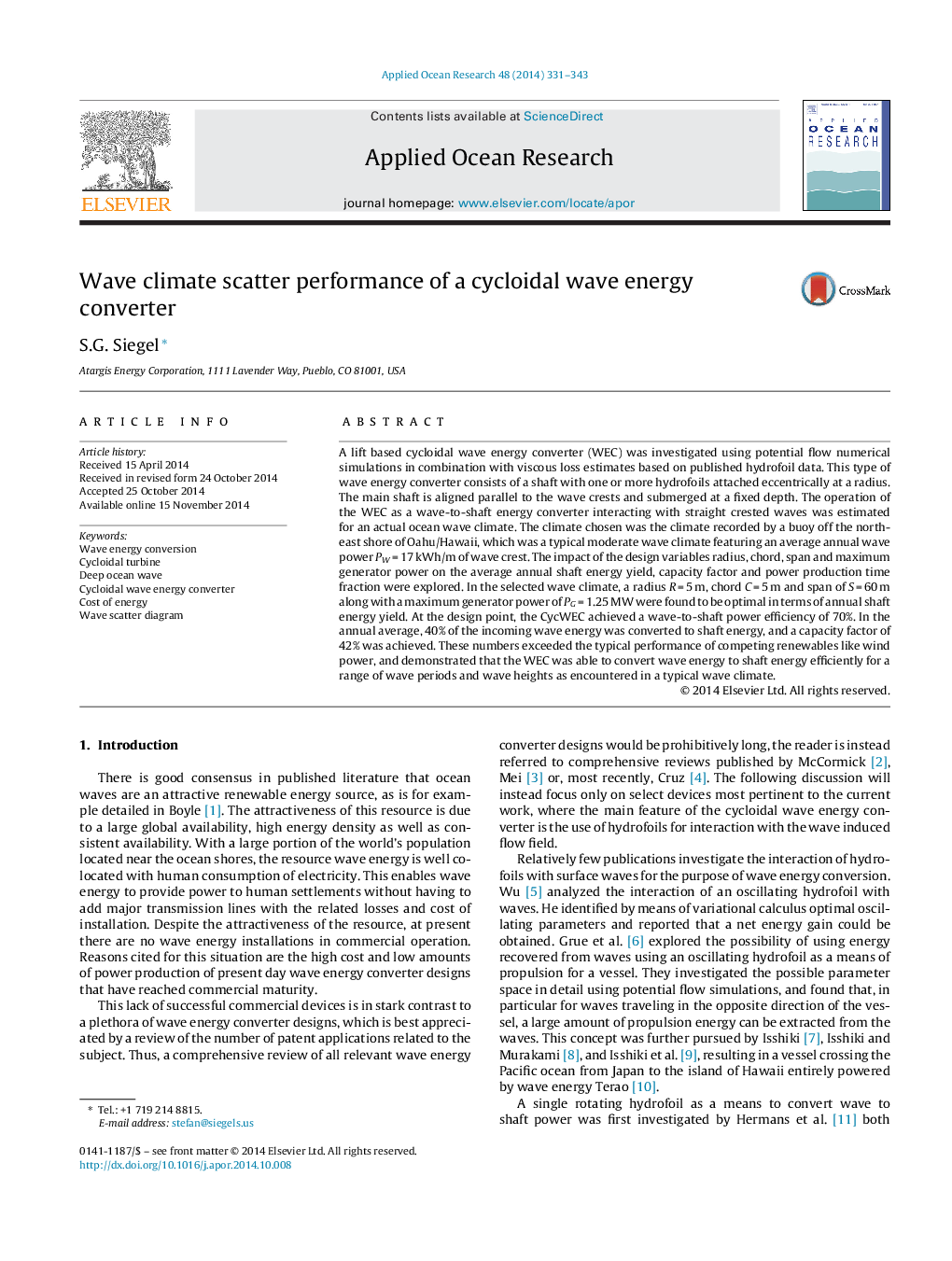| کد مقاله | کد نشریه | سال انتشار | مقاله انگلیسی | نسخه تمام متن |
|---|---|---|---|---|
| 1720012 | 1520255 | 2014 | 13 صفحه PDF | دانلود رایگان |
• The performance of a cycloidal wave energy converter is evaluated in an ocean climate using numerical simulations.
• The wave-to -shaft peak performance at the design point exceeds 70% of the incoming wave energy.
• For a typical design the capacity factor and average annual energy yield are found to be larger than 40%.
A lift based cycloidal wave energy converter (WEC) was investigated using potential flow numerical simulations in combination with viscous loss estimates based on published hydrofoil data. This type of wave energy converter consists of a shaft with one or more hydrofoils attached eccentrically at a radius. The main shaft is aligned parallel to the wave crests and submerged at a fixed depth. The operation of the WEC as a wave-to-shaft energy converter interacting with straight crested waves was estimated for an actual ocean wave climate. The climate chosen was the climate recorded by a buoy off the north-east shore of Oahu/Hawaii, which was a typical moderate wave climate featuring an average annual wave power PW = 17 kWh/m of wave crest. The impact of the design variables radius, chord, span and maximum generator power on the average annual shaft energy yield, capacity factor and power production time fraction were explored. In the selected wave climate, a radius R = 5 m, chord C = 5 m and span of S = 60 m along with a maximum generator power of PG = 1.25 MW were found to be optimal in terms of annual shaft energy yield. At the design point, the CycWEC achieved a wave-to-shaft power efficiency of 70%. In the annual average, 40% of the incoming wave energy was converted to shaft energy, and a capacity factor of 42% was achieved. These numbers exceeded the typical performance of competing renewables like wind power, and demonstrated that the WEC was able to convert wave energy to shaft energy efficiently for a range of wave periods and wave heights as encountered in a typical wave climate.
Journal: Applied Ocean Research - Volume 48, October 2014, Pages 331–343
